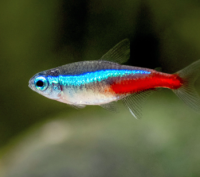Corydoras is a genus of small freshwater catfish, commonly known as cory catfish. They are popular among aquarium enthusiasts due to their peaceful nature and playful behavior. Here are some key features:
Key Features:
- Size: Corydoras species typically range from 1.5 to 4 inches (4 to 10 cm) in length, depending on the specific species.
- Appearance: They have a distinctive, flattened body shape and are characterized by their bony plates and barbels around the mouth, which help them forage for food in the substrate. Corydoras come in various colors and patterns, including spotted, striped, and albino variations.
- Behavior: Corydoras are social fish that thrive in groups, often seen swimming and foraging together at the bottom of the aquarium. They are peaceful and can be kept with a variety of community fish.
Care Requirements:
- Aquarium Setup: They prefer a well-planted tank with soft substrates, as they enjoy digging and rooting around. A minimum tank size of 10 gallons is recommended for a small group.
- Water Conditions: Corydoras do well in soft, slightly acidic to neutral water (pH 6.0 to 7.5) and temperatures ranging from 72°F to 78°F (22°C to 26°C).
- Diet: They are omnivorous and should be fed a balanced diet of sinking pellets, flakes, and occasional live or frozen foods.
Corydoras are appreciated for their engaging behaviors and are a great addition to community aquariums, making them suitable for both beginners and experienced aquarists




